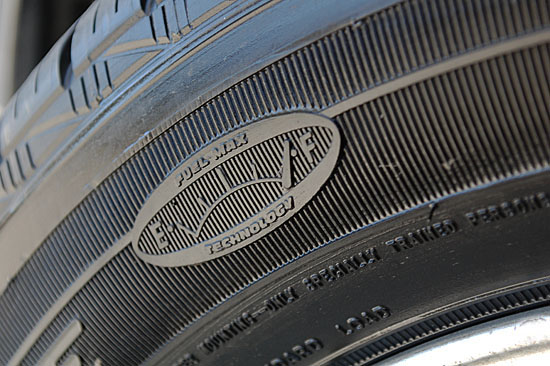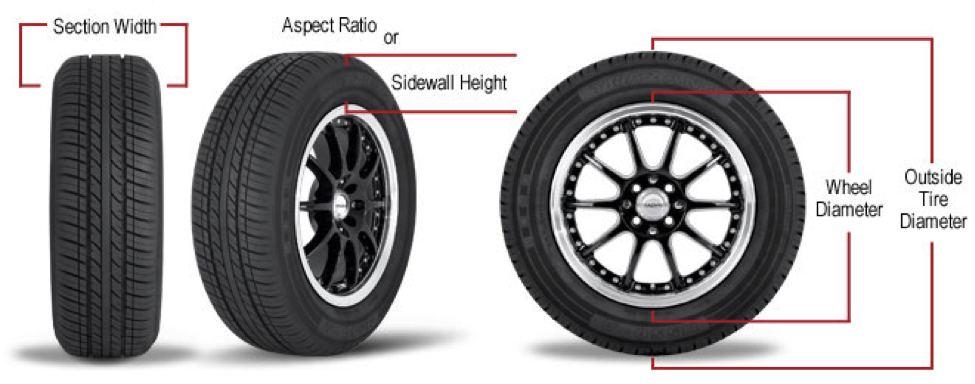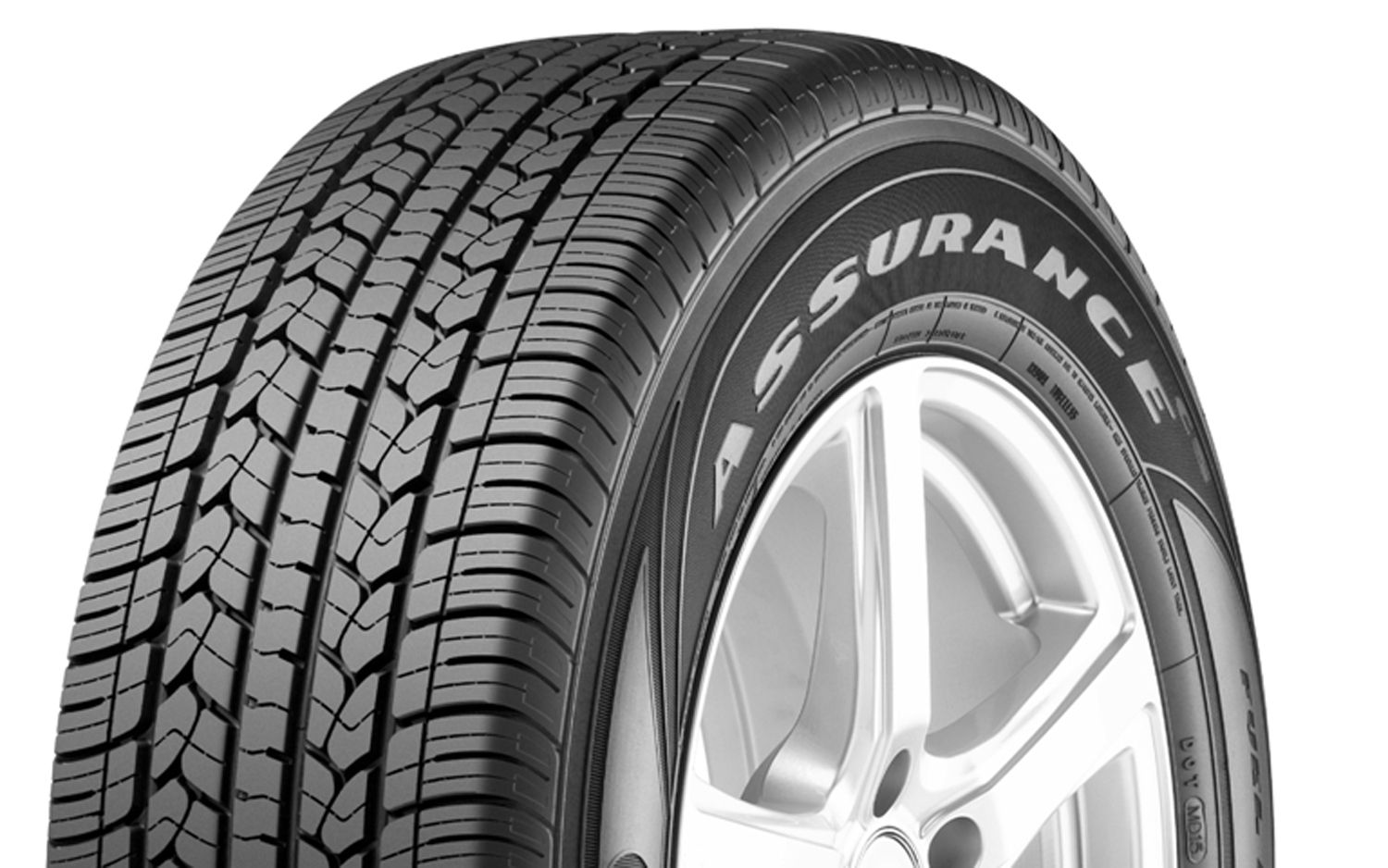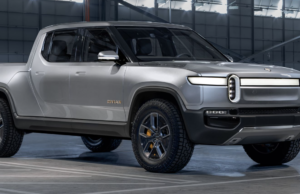Goodyear Assurance Fuel Max Review
Updated: Jan 27 – 2020
Goodyear is a company best known for their iconic blimp. It’s been featured in television shows, movies, and even Ice Cube’s 1992 hit “It Was a Good Day”. Although the blimp is still doing laps around California, the Goodyear logo spends most of it’s time cruising the roads of America.

As one of the largest tire companies in the world, Goodyear has options for almost every vehicle on the road, in both premium and budget categories. Today, we’ll be looking at a tire that makes a unique promise. The Assurance Fuel Max tire is supposed to save you money on both the purchase price, and at the pump. But we all know how important good tires are, so we decided to put this tire to the test to see if the claims are warranted, and if this tire should have a place on your own wheels.
Compatibility
The Fuel Max tires, part of the Goodyear Assurance brand, are available for passenger cars, focused primarily on smaller cars. They’re available in widths ranging from 175mm to 235mm, ratios from 45 to 70, and rim sizes from 15 to 17. If you drive a compact or full size car, you can rest easy knowing that there is a size that will fit your vehicle. There are some models available for vans and light trucks, although these are not as comprehensive as the smaller tires.
With a speed rating of H, they’re suitable for speeds of up to 130 Mph or 210 Km/h. While not the fastest available, this should cover most non-exotic automobiles.
How It Compares to Other Tire Reviews
I know we’re early in the review, and to be frank if you are looking for a hard-rolling fuel saving tire like this one then it’s one of a kind. (also your vehicles service manual says to use these, why are you still reading a review?) HOWEVER we have been writing these individual tire reviews for years now and it’s time for a roundup! Just follow the next link to see comparisons and suggestions. But first, take another look at this tire. Because there aren’t many like it.
Value
These are an economy priced tire, with most sizes selling for a little under $100 each. That being said, they have above average performance for their price category. This has lead them to be a very common dealer installed tire on many smaller cars, especially when fuel economy is one of the main selling points over ride comfort.
Although sold as an all season tire, they are geared more for dry and wet environments. Coastal regions that don’t get a lot of snow can run these all year round, but for the colder states you’ll still want to continue to run dedicated winter tires.
Braking

These tires have large tread blocks, with a lot of road contact coming off the sidewalls. Although there are slight inclines in the groves to keep fluid and debris out, they are still reasonably straight. This means that when you hit the brakes, there is a lot of surface area slowing you down in all conditions. Despite their low price, they still had above average braking performance in both dry and wet conditions, which is not something you often see at this price point.
Handling
These tires have quite firm sidewalls, which support the shoulder blocks when under strain. This gives them impressive handling performance, allowing you to make tight turns without much slipping or squealing. Although they had better handling than most tires in it’s class, this is something we’d consider essential for any tire installed on a small, peppy car. These cars are very lightweight, and don’t put a lot of pressure on the ground. It’s important to have a tire, like this one, that can grip the ground and keep you travelling in the direction you want to go.
Traction
Traction under the right conditions is one of the most important things in a tire, but not every tire performs the right way. While handling might be fine on a low resistance tire, traction tends to drop. Low resistance and high traction are basically opposite demands. You can’t have both. We found that traction (both dry and wet traction) wasn’t sub standard, but it’s not nearly as good as you’d get with a high performance tire. For your average commuter tire you’ll get about the same traction, but we wouldn’t recommend this for a sports vehicle that requires a performance rating.
Wet Traction

As these tires are intended for both dry and wet environments, their performance was above average in wet conditions. This is due primarily to the wet block / dry block system in place. You’ll notice four large grooves that run the circumference of the tire. This provides channels for the water to enter, while the rotational force of the tire flings the water out through the deep grooves in the tread block. You’ll notice that the grooves are alternating in direction in the center blocks, but straightens out and the sides. This uses the motion of the water to launch it at high speeds through the sidewall, keeping it out of the dry blocks on the side and improving wet traction.
The end result? You get a tire that you can drive in the pouring rain, without worrying about loss of traction or hydroplaning.
Snow & Ice Performance
Despite being an all season tire, this design is just not conducive to driving in snowy conditions. Light snow is fine. Both traction and braking performance were average at best when compared with other all season tires, and seasoned winter drivers know that these just won’t do. If you have to buy a pair of all seasons to run in the snow, there are better options. But if at all possible, you’ll get much better performance running these most of the year, and a pair of entry level snow tires in the winter.
Fuel Economy
 Can these tires actually save you money on gas? This is the million dollar question. First, let’s understand how this feature is supposed to work. Imagine that you kick a soccer ball down a paved road. You can probably kick it pretty far. Kick the same ball on a grass field, and it will slow to a stop much earlier. This is due to low resistance. By making the tire from a slightly harder material that remains smooth through it’s life, the tires won’t slow your car down quite as much while on the road. This helps you keep your foot off the gas pedal, keeping a little gas in your tank.
Can these tires actually save you money on gas? This is the million dollar question. First, let’s understand how this feature is supposed to work. Imagine that you kick a soccer ball down a paved road. You can probably kick it pretty far. Kick the same ball on a grass field, and it will slow to a stop much earlier. This is due to low resistance. By making the tire from a slightly harder material that remains smooth through it’s life, the tires won’t slow your car down quite as much while on the road. This helps you keep your foot off the gas pedal, keeping a little gas in your tank.
Goodyear claims that you can save up to 4,000km (2,600 mi) worth of gas over the lifetime of the tires. On a Honda Civic, this would work out to be $166 in savings. On a Mustang, you’d save $375, almost paying for the tires.
But what’s important to remember is that these numbers are derived from tests in a lab. In the real world, how much you’ll save depends on where and how you drive. Studies by the EPA have determined that, during steady speed driving, 25% of your gas is used to overcome road resistance. Driveling friction accounts for 15%, and air drag is almost 60%. But reducing road resistance will still improve your fuel economy a bit.
If you’re driving in the city, you’re probably used to stop and go traffic. 35% of your fuel is used just getting your car moving, 45% goes to the drive line, 5% to air friction, and only a meager 15% for tire rolling resistance. For city drivers, you won’t see any noticeable improvement.

You also need to consider what kind of tires you have on your car now. Many gas effecient vehicles are sold with low rolling resistance tires, and manufacturers recommend that they are always used. If you already have low resistance tires, you won’t notice much of an improvement with the Goodyear Assurance, but you’ll definately notice a decrease without them.
All of that being said, these tires have some of the lowest rolling resistance on the market. If your vehicle requires them, they are an incredible buy.
Tire Size
Tire size depends a lot on the vehicle you drive, and this particular tire is available in all of the most common tire size denominations for small and medium size passenger vehicles. If you drive a big truck, you might want to go for a different set of tires. But for the rest of you, these should do the trick. Just make sure you get the exact tire size and load rating for your vehicle, so you can improve ride comfort and reduce road noise.
Tread Life
One of the nice things about low resistance tires is that they won’t wear out as quickly. These tires come with a 60,000 Km tread wear warranty, which is almost unheard of at this point. They’ll likely last much longer than that, but if they somehow wear out before you’ve driven 60,000 Km, you’ll get replacement tires.
Ride Comfort
With firm sidewalls for improved handling, and hardened rubber for reduced rolling resistance, there are several key benefits to the materials used in these tires. Unfortunately, this comes at the expense of ride comfort. The tires aren’t uncomfortable to ride on, but if you’re coming from a set of ultra-soft tires you’ll definitely notice a difference. You feel the road a little more, and small bumps rely on your suspension to absorb. Plus with the windows down there is a little more road noise. With a lighter vehicle, this will be less noticeable. But heavier cars with beefy suspension won’t be quite as smooth as they could be.
Where to Learn More
if you want more information, there are plenty of places you can find it without spending a lot of time. Checking out some of the reviews over at 1010 tire you’ll find information on winter performance and where to purchase. Of course, comfort is always a priority when looking for information, so be sure to ask your local tire dealer as well. Another source for information is service centers. When you regularly service cars, you hear stories of how tires perform in rain, snow, or all year round. They can help you find the right tire for your vehicle, so you can get some assurance before you buy.
Our Final Review
Unfortunately, these tires aren’t some magical tool that will double your fuel economy and pay themselves off. But many fuel efficient vehicles are designed for low rolling resistance tires, and these are the best you can buy in that regard. Combined with their low price, high tread life, and excellent handling, we’d recommend these as an affordable option for any budget-minded consumer, and customer reviews seem to back this up.
One of the biggest downsides to these tiers is the traction. Getting an improved MPG rating means making these tires roll more smoothly on the road, and that requires harder rubber. Harder rubber reduces wet traction as well as snowy. Well, the difference isn’t huge, but you’re not going to get the same performance as you would with other tires available for your vehicle. That being said, traction should still be ok in dry conditions, mainly just the wet ones that will suffer.
Another piece of information to consider is the time you’ll spend on the road. The more time on the road, the more fuel your vehicle will consume. Even though the MPG savings are modest, those of you who spend a lot of time driving your vehicle on the road might discover that the fuel consumption will payoff. It all depends on the information you have available: how fuel efficient is your vehicle now? Would a 10% decrease on your yearly fuel cost pay off? What about winter conditions? If its pretty snowy where you live, these are going to be summer season tires only.
One thing we liked was the noise reduction. Many reviews don’t mention that these tires are quite a bit more quiet, especially with a small size passenger car (although be sure that the tire size available matches the size for your vehicle
It’s not easy to find a great tire. And overall, we have to say that they are great tires for the price. The fuel max tire has excellent dry traction and still does passably in wet snow. The speed rating is enough for most modern passenger vehicles, making the fuel max tire a decent choice. If wet roads are a daily occurance for you and snow traction is a priority, there might be other options. But outside of that, you can’t go wrong using these as your new tires.


















